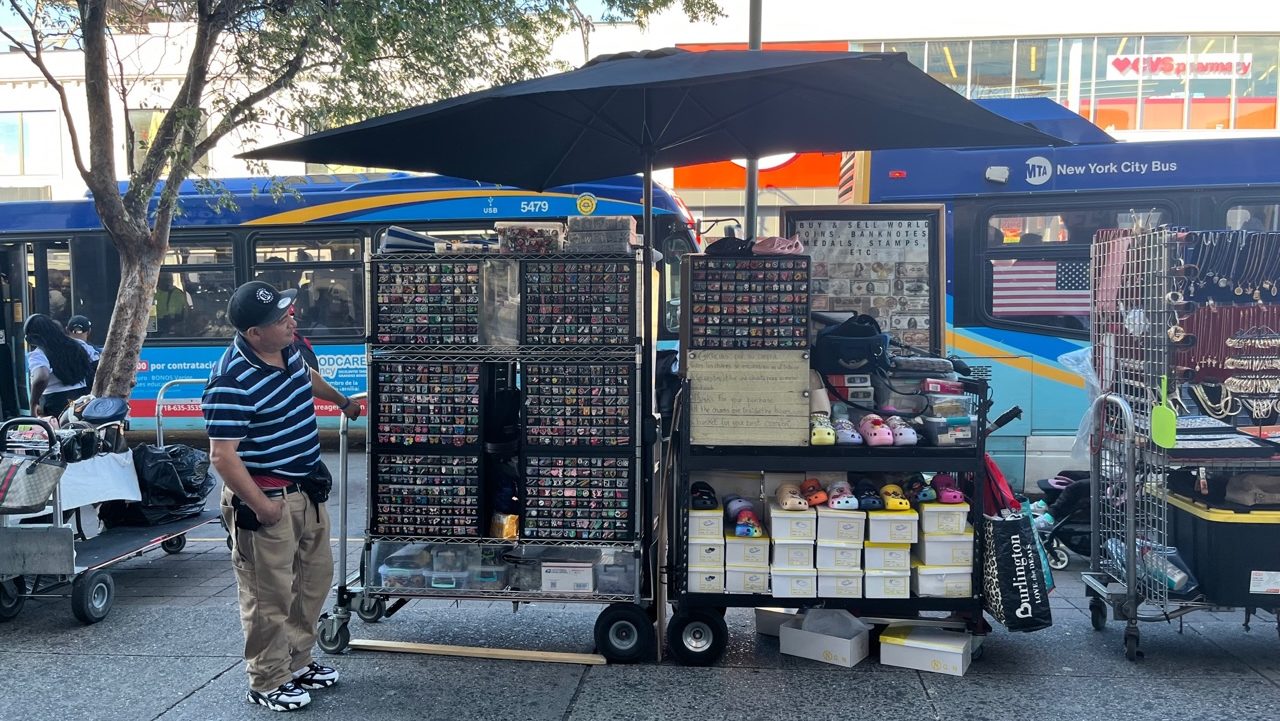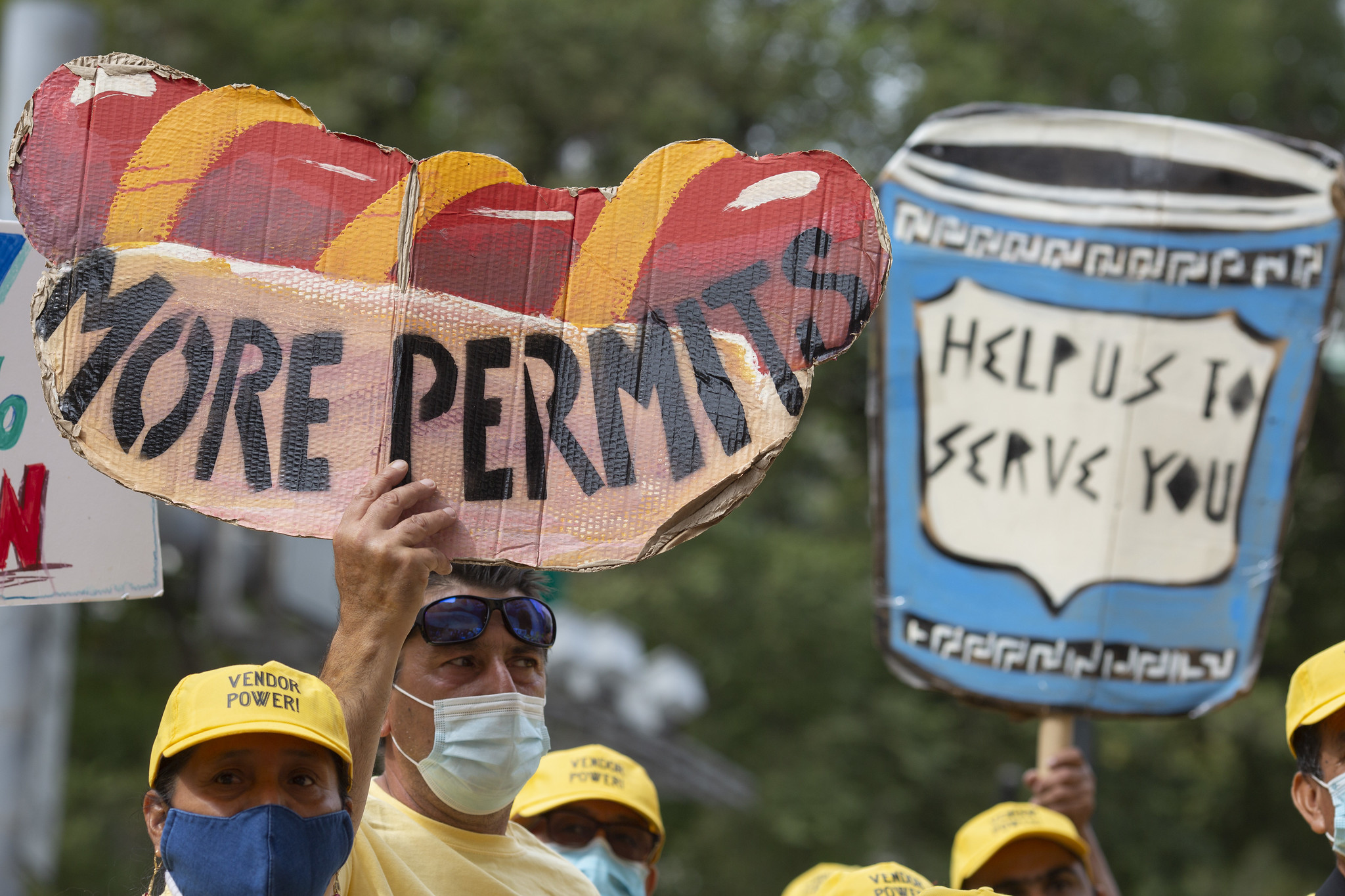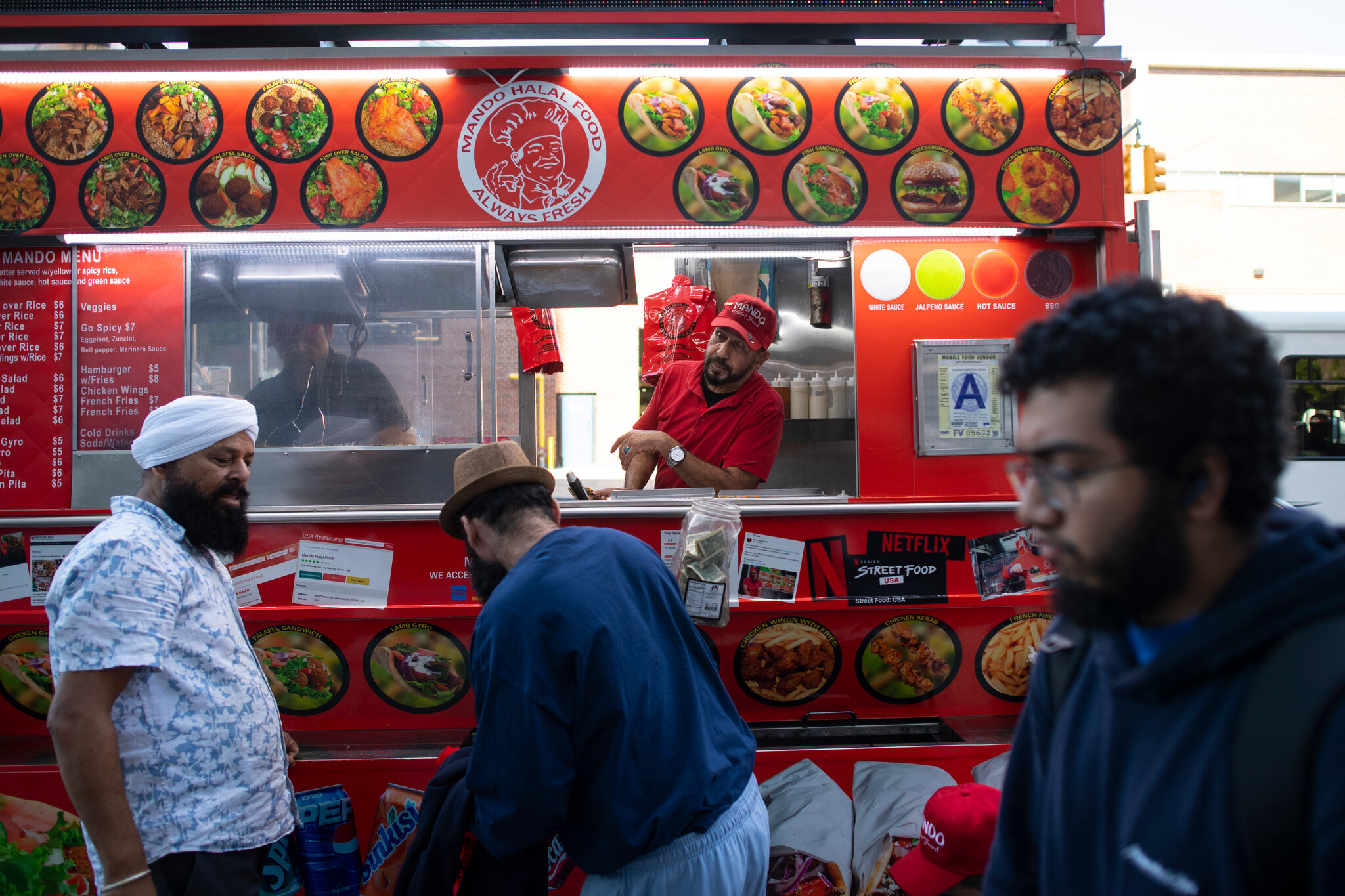Street vendors in New York City are finding it increasingly difficult to work legally, as the city’s permitting system continues to fail them. This issue was thrust into the spotlight recently when a 14-year-old was handcuffed for selling fruit in Battery Park.

The Permitting System is Failing
For over 15 years, Samya Eskandar has been trying to obtain her food cart permit. Before the COVID-19 pandemic, she rented someone else’s permit and sold hot dogs at Broadway and Canal. Now, she is one of more than 10,000 individuals on a city waitlist for permits. Eskandar’s waitlist number is 1,764, a stark reminder of the lengthy and uncertain process. “What I do? Me old. I looking for a job. What do I do for a job?” Eskandar said, expressing her frustration. While waiting, she has been doing part-time work, but it is not enough to cover her expenses.
Why the Wait? Understanding the Permit Bottleneck
New York City imposes a cap on the number of street vending permits available. To help those eager to work legally, a new law was enacted in 2022 to release more permits. However, progress has been slow. By November, only 14 new permits had been issued. As of now, the city’s Department of Health reports that 127 permits have been issued.
Earlier this week, investigative reporter Mahsa Saeidi questioned Mayor Eric Adams about the sluggish rollout and what more could be done to expedite the process. Adams acknowledged the challenge, saying, “I believe no matter how many permits we put out, there is still going to be some illegal activity.” Despite efforts to streamline the process, the mayor indicated that the city is exploring innovative solutions.
Pilot Programs and Expanding Markets
One such initiative is a pilot program launched at Corona Plaza, where a small group of vendors without individual permits are allowed to sell items legally. Mayor Adams stated that this pilot would be expanded to markets across the city. However, this response has not satisfied all critics. Comptroller Brad Lander, in November, told the mayor that the “sheer number of people on waitlists” indicates that the “City can do much more.”
Lander’s critique underscores the ongoing struggle faced by street vendors who seek to work within the legal framework but are stymied by bureaucratic obstacles. While Mayor Adams acknowledged past inequities, he also warned against creating chaos by removing all restrictions. “If you just open the city up to people selling whatever they want whenever they want, we are creating a level of disorder that we can’t accept,” Adams said.

The plight of street vendors like Samya Eskandar highlights the need for a more efficient and equitable permitting system. As the city continues to experiment with solutions, the goal remains to provide legal opportunities for vendors while maintaining order and safety in the marketplace. The expansion of pilot programs and increased issuance of permits are steps in the right direction, but the pace must quicken to meet the urgent needs of those waiting to earn a living
